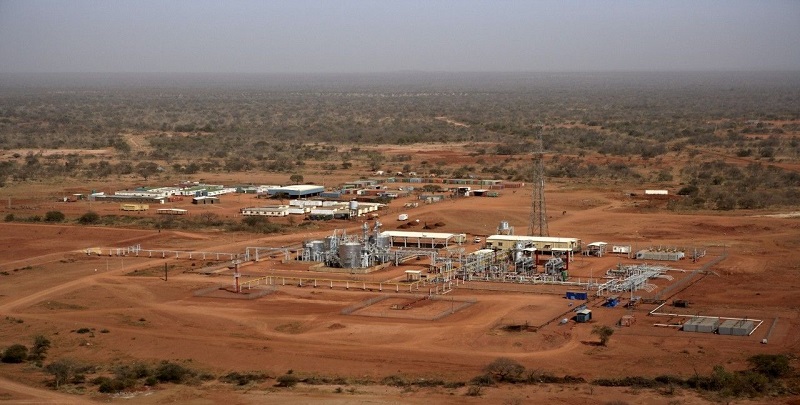To achieve the purpose of strengthening the good wall, ensuring continued safe drilling, sealing oil, gas, and water layers, ensuring layered testing during exploration, and reasonable oil and gas production in the entire exploitation process, high-quality steel pipes are entered, and cement is filled in the wellbore and steel pipe ring, which is called cementing engineering.

First, the purpose of cementing:
- Seal and isolate complex formations that are easy to collapse and leak, consolidate the drilled wellbore, and ensure the smooth progress of drilling;
- Provide the basis for installing the wellhead device, control the wellhead blowout, and ensure that the mud outlet in the well is higher than the mud pool, to facilitate the drilling fluid to flow back to the mud pool;
- Seal and isolate oil, gas, and water layers, prevent oil and gas water layers with different pressures from channeling each other, and provide favorable conditions for the normal exploitation of oil and gas;
- Protect the freshwater resources in the upper sand layer from the pollution of oil, gas, salt water, and other liquids in the lower rock layer;
- After the well is put into operation, it creates favorable conditions for acid fracturing to increase production;
Second, the steps of cementing
- Lower casing
Unlike drill pipes, casings are one-time pipes that are inserted without thickening and lengths that are not strictly regulated. To ensure the quality of cementing and smooth underground casing, the structural design of casing columns should be done. Design the strength of the casing according to the use, formation prediction pressure, and casing inlet depth, and determine the wall thickness, steel grade, and wire fastener type of casing.
- Fill cement
Cement injection is the key process after the casing enters the well, and its function is to seal the annular space of the casing and the well wall to seal the oil and gas water layer so that the casing becomes a channel for oil and gas to the well.
- After the wellhead installation and casing test pressure casing is injected with cement, and the wellhead should be installed during the cement solidification period. The top of the surface casing should be fitted with the shell of the casing head. The top of each casing is hung in the casing head, which is mainly used to support the weight of the technical casing and the oil casing, which is especially important for cementing cement before returning to the ground. The casing head is also used to seal the annular space between the sleeves and prevent pressure from escaping. The casing head is also a transitional connection between the blowout preventer and the tubing head. There are also two side openings on the casing head used on land, which can be used to re-extrude cement and monitor well conditions. Injection of balancing fluid and other operations.
- Check cementing quality
After installing the casing head and connecting the BOP and anti-blowout pipeline, the pressure resistance of the casing head seal should be checked, and the seal pressure test connected with the BOP should be done. After the cement plug in the casing pipe, the pressure test of the casing string should be done, and the formation fracturing test should be done after drilling through the casing shoe 2~3 meters (technical casing). The quality inspection of cement rings should be done in production wells, and sound waves should be used to detect the cementation of cement rings with casings and well walls. After all the indicators of cementing quality are qualified, it can move on to the next operating procedure.
Third, the method of cementing
- Inner pipe string cementing
The plug connected to the drill string is inserted into the sealed socket of the casing floating hoop or floating shoe, and the cementing operation is carried out by injecting cement through the drill string, which is called inner pipe string cementing. Inner pipe string cementing is mainly used for cementing large-size (16″~30″) conduit or surface casing.
- Single-stage double-stopper cementing
First, the casing is installed to the predetermined depth of the well, and then the cement head and rubber plug (top plug and bottom plug) are installed, the cement is circulated, the barrier liquid is beaten, the bottom plug is cast, and then the cement slurry is injected, and then the top plug is cast to start replacing the slurry. The bottom plug falls on the floating hoop and is shot through. The top and bottom plugs touch the pressure and the cementing ends.
- Tailpipe cementing
Tailpipe cementing uses the drill pipe to send the tailpipe to the suspension design depth, through the tailpipe hanger to hang the tailpipe on the outer casing, sit and seal the tailpipe hanger, and then start to inject cement, the drill pipe stopper is replaced, the drill pipe stopper cuts the tailpipe rubber plug and coincides with the tailpipe rubber plug, and goes down to the ball base to touch the pressure, and the cementing ends.
Development status: Cementing has formed a relatively stable supporting facility technology, and the commonly used cementing methods include cement cementing, asphalt cementing, and resin cementing. Different cementing methods are suitable for different well types and geological conditions. At the same time, cementing equipment is also very important, they include cementing pumps, cementing pipes, cementing slurry, etc. When carrying out cementing operations, it is necessary to pay attention to some technical parameters, such as the density, viscosity, setting time, etc. of cementing slurry, which have an important impact on the quality and effect of cementing.



Follow Us